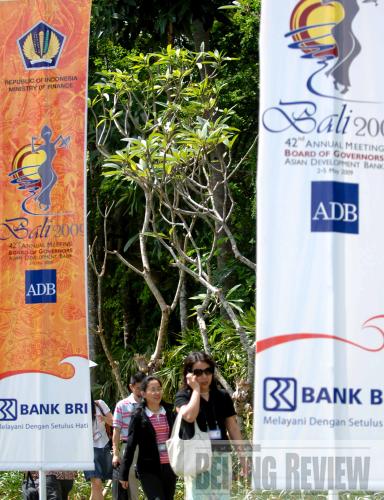|
 |
|
NON-POLITICAL: According to its charter, the ADB should not interfere in the political affairs of its members and should consider only economic factors in its decision-making (YUE YUEWEI) |
Not long ago, the Executive Board of the Asian Development Bank (ADB) adopted the India Country Partnership Strategy (2009-12). The document is of special concern to China because it deliberately takes a vague stance on an important and sensitive issue. Foreign Ministry spokesman Qin Gang said at a press conference on June 18 that the ADB adopted the document, which involves disputed territories between China and India, without regard for China's major concerns. "China expresses strong dissatisfaction with the move, which neither changes the existence of immense territorial disputes between China and India, nor China's fundamental position on its border issues with India," he said.
As a member of the ADB, China reacted strongly to the document for two reasons. First, the $2.9-billion loan proposed in the document includes a $60 million flood management and public health project in "Arunachal Pradesh." Second, China voiced its opposition to the plan in March. While urging the ADB to postpone approving the plan, it called on the bank to remove the loan to "Arunachal Pradesh." India, however, mounted heavy pressure on the ADB. It not only sent letters to the bank's other 66 members to promote its views but also tried its best to persuade the United States, Japan and South Korea, which respectively have the first, second and fourth largest number of votes in the ADB. China, which holds the third largest number of votes, was unable to reverse the situation. The ADB finally passed the document on June 15.
China and India share a border about 1,700 km long, which is divided into eastern, central and western sections. China basically controls the western section with an area of more than 30,000 square km, whereas India largely has control over the central section some 2,000 square km in area. The eastern section, which contains the largest area of disputed territory, is under Indian control known as "Arunachal Pradesh."
|
